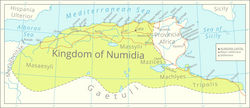Happy Sunday, readers! Ready to meet our holy role-model for August? St. Monica is a beloved saint for married people and mothers everywhere. Her son, St. Augustine of Hippo, was one of the most influential people in the history of Christianity, and he owes his conversion to his mother’s prayers and tears. Monica and Augustine both have feast days this month, so it is the perfect time to learn more about them!

I’m going to switch up my writing a little this time, also, to see how it is received. Instead of long paragraphs of info, I have a list of 10 must-know facts about St. Monica, with a bit more detail offered underneath. Let me know if you prefer this format or the old format in the comments!
1. Monica was born around the year 331 in northern Africa

Her hometown was Tagaste, in the Berber kingdom of Numidia. This area had been evangelized in the past century or so, with many martyrs from the area including the well-known saints Perpetua and Felicity. The famous theologian Tertullian was also born here.
2. Monica had a strict Christian upbringing.
A servant of her family was especially strict with Monica and her siblings. Monica grew quickly in virtue, but some of her childhood experiences were also fairly traumatic and caused her to feel shame and self-doubt.
3. Monica had a difficult husband and marriage.

She was married around age 20. Monica’s husband, Patricius, had a bit of a temper. He was verbally abusive and also most likely unfaithful to her. Patricius was a pagan for most of his life, but by Monica’s daily prayers on his behalf, he was converted and baptized just before he died.
4. Monica was known to be a great peacemaker.
She often helped other local women negotiate marital conflict, using the wisdom she had gained from experiencing the temper and abuse of her own husband. She also helped quell rumors and gossip between the local women to protect the peace between them all.
5. Monica had three children.
We know quite a bit about Augustine, because ‘The Confessions of Augustine’ is one of the most important literary works in the history of the church. We know much less about Augustine’s brother, Navigius, and a sister whose name is lost to history but is traditionally called “Perpetua.” Navigius was with Augustine and Monica when Augustine converted in Italy, and he went on to be married and have religious children. “Perpetua” became a nun and Augustine addressed her convent in his letter “Rule of Nuns.”

6. Augustine writes that he owes his conversion to his mother’s intercession.
After Patricius’ death, Monica followed her wayward son around, praying for him constantly and trying to keep him out of trouble. In his youth, did not leave a remotely chaste lifestyle, even fathering a child out of wedlock. He also became involved in a heresy against the faith called Manichaeism. This heresy claims humans were cocreated by two gods, one of good/ light and one of evil/ darkness, so we cannot be held totally accountable for our sins. Eventually, though, Augustine found the truth in reading scripture, was converted, and sought baptism for himself, his brother, his son, and several friends. Monica was overjoyed!
“I cannot express the affection she bare to me, and with how much more vehement anguish she was now in labour of me in the spirit, than at her childbearing in the flesh.”
St. Augustine of Hippo commenting on his mother’s constant prayer for his conversion

7. Monica was also close with another theological giant, St. Ambrose.
She attended Mass every day, plus prayed at the church twice a day, so she was around Ambrose frequently. When St. Ambrose locked himself and some parishioners away in his church for a week to defend themselves from a rival heretical faction, Monica was there with him.
8. After her sons and grandson were baptized, Monica felt her life’s work was accomplished and she was ready to go to heaven.
Soon after, she died of illness in May 387, aged 56. “This only I request,” she told Augustine, “that you would remember me at the Lord’s altar, wherever you be.”
9.St. Monica’s feast day is celebrated on August 27th.
This is the day before St. Augustine’s feast day. In the eastern church, she is often honored instead on May 4th, the day before Augustine’s conversion.

10.St. Monica is a powerful intercessor, especially for women in troubled marriages and parents of wayward children.
St. Monica is known as the patron saint of alcoholics, abuse victims, conversion, married women, patience, and mothers. I have prayed for her intercession for my own children, and I know she is a favorite saint of my mother’s, also. Here are a few St. Monica prayers to get you started.
References:
Augustinians of Australia. Augnet. Last modified 2013. http://www.augnet.org/.
Falbo, Giovanni. St. Monica: The Power of a Mother’s Love. Boston: Pauline Books and Media, 2007.
St. Augustine of Hippo, The Confessions of St. Augustine. New York: P. F. Collier and Son Co., 1909.
Pope, Hugh T. “Saint Monica.” Catholic Encyclopedia. Last modified, 1913. https://en.wikisource.org/wiki/Catholic_Encyclopedia_(1913)/St._Monica.





One Reply to “The power of a mother’s prayers: St. Monica”